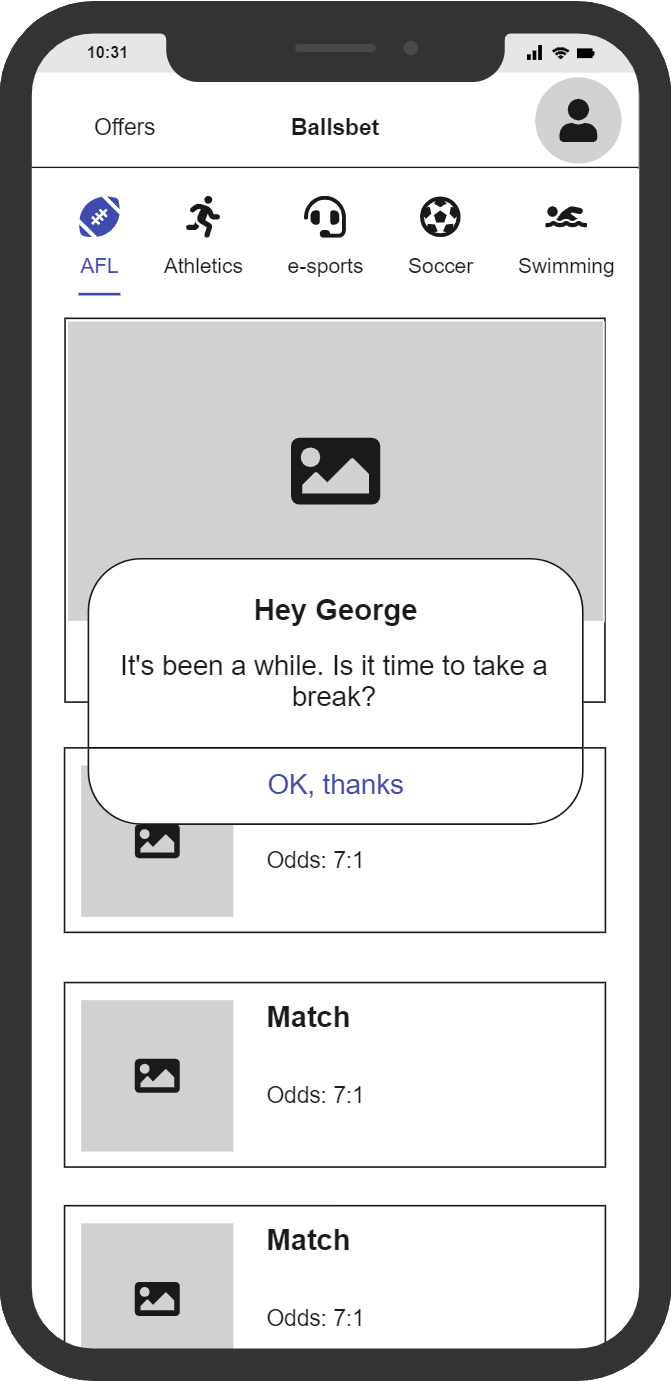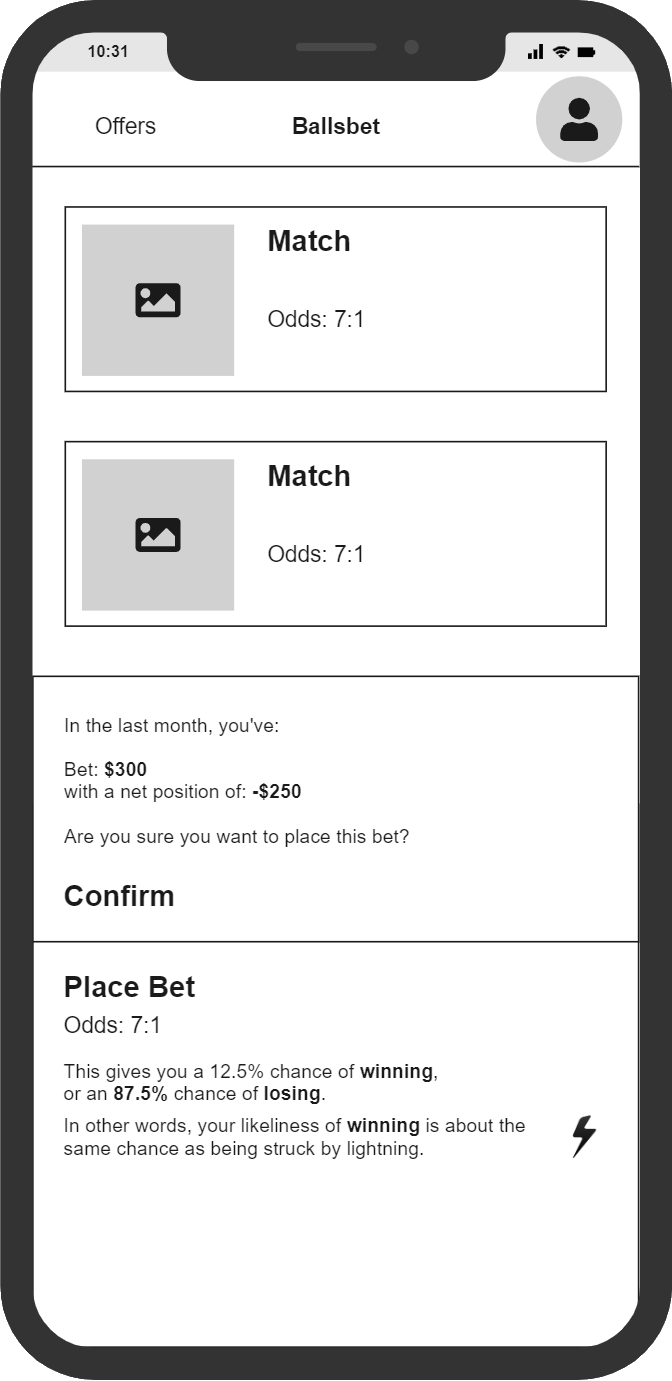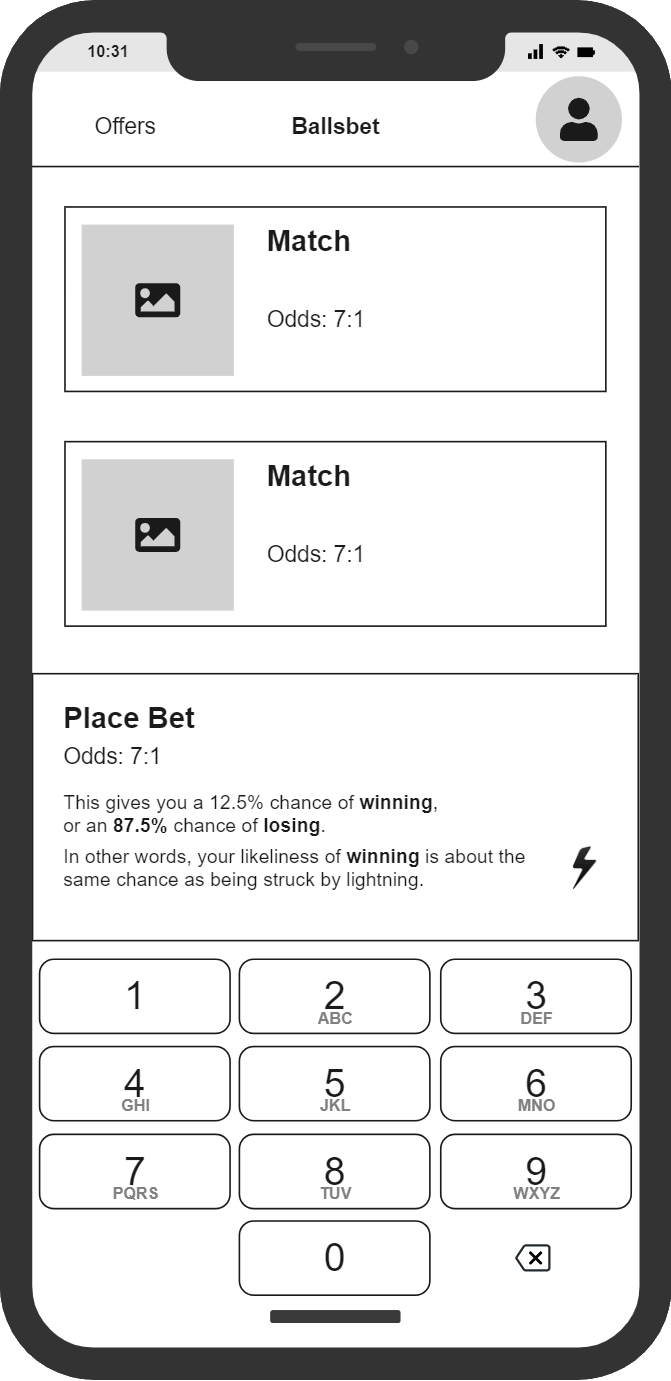First, I looked at a range of betting apps on the Australian market. The primary purpose was to understand how these apps persuade their users to take certain actions.
Additionally, I wanted to contrast the user experience of these actions with the user experience of actions that could be considered less desirable from the gambling provider's perspective.
I then looked at the users, trying to ascertain their experience of using these apps. I looked at comments made against apps in the app stores, and at videos on YouTube relating to the user experience of these apps.
I also wrote and distributed an online, anonymous survey amongst my network and my work colleagues; however, I couldn't gain traction with this most likely due to the sensitive nature of the information shared (link).
I looked at the data coming out of the research. Some of the findings were:
As a result, I identified three main themes while using and researching the apps.
So, what is the potential harm, particularly for people with gambling addiction? Mapping this back to the themes identified:
Now let's relate this back to actual users. What are the Jobs to be Done by these users, and what is the profile of a user affected by gambling addiction while performing this Job to be Done?
The most straightforward Job to be Done for any user of any gambling app would be as follows:
I want to place a bet so that I can win some money.
For a problem gambler, this might be reframed as follows:
I want to recapture the magic of when I first gambled, or
I want to win back all the money that I've lost.
I looked at what the research was telling me and what I understood of problem gambling and developed the following (proto) Persona.
What does the journey of this user look like? What are the pain points and the delights of these users?
Making an evaluation of the user journey allows us to consider where interventions may help.
So, what have we determined?
Relating back to the themes:
We have considered the user and the journey they take through the app. We've identified some key findings out of this and the research that was performed on the app and its users.
At this stage, we can start to generate some ideas that might help to reduce the more problematic aspects of the user experience.
When performing the ideation, I set my timer for 8 minutes, coming up with 8 ideas in this time (Crazy 8's). Doing this 3 times meant I had 24 different ideas (of varying quality). These ideas were then mapped to 4 different quadrants depending on whether they were Abstract/Concrete or Detailed/Big Picture concepts (or somewhere in between).
I then ran another round of ideation to see if I could generate more ideas for those quadrants that didn't have many ideas represented.
The thinking behind this approach is to firstly, come up with lots of ideas in a short amount of time, and secondly, generate ideas varying in their scope and viability.
These ideas were then assessed and prioritised in terms of how 'good' they felt to me. Would they solve a genuine user problem? Could I say with confidence that these ideas could be implemented by engineering and/or design? Would the implementation of these ideas lead to business growth?



